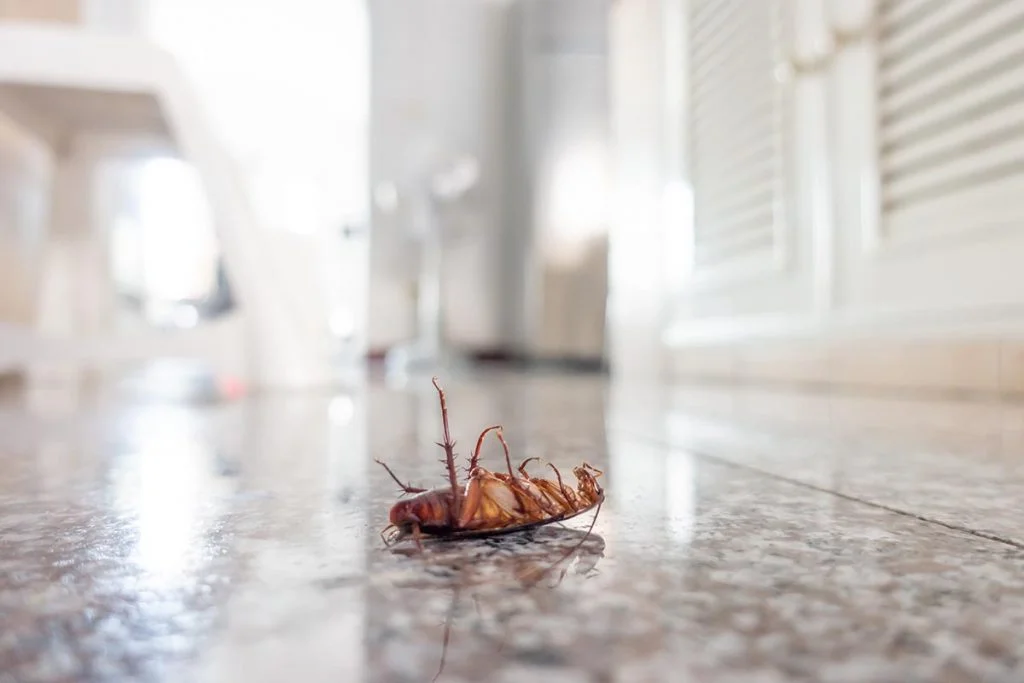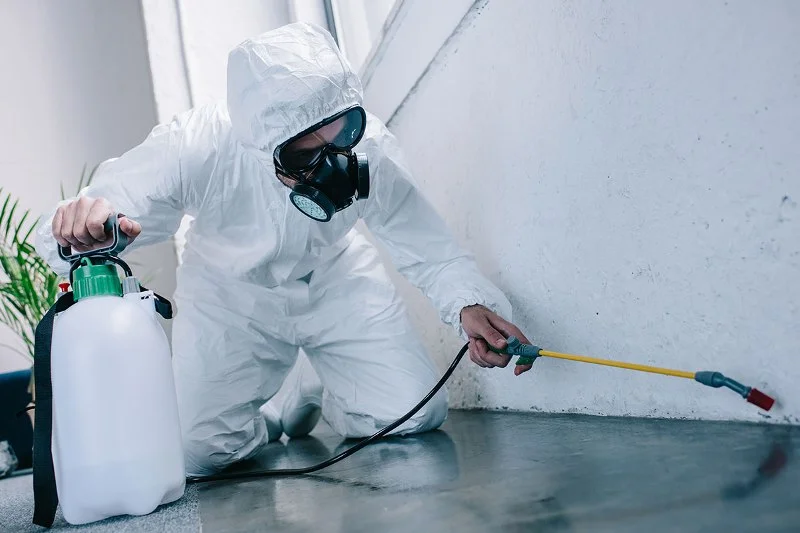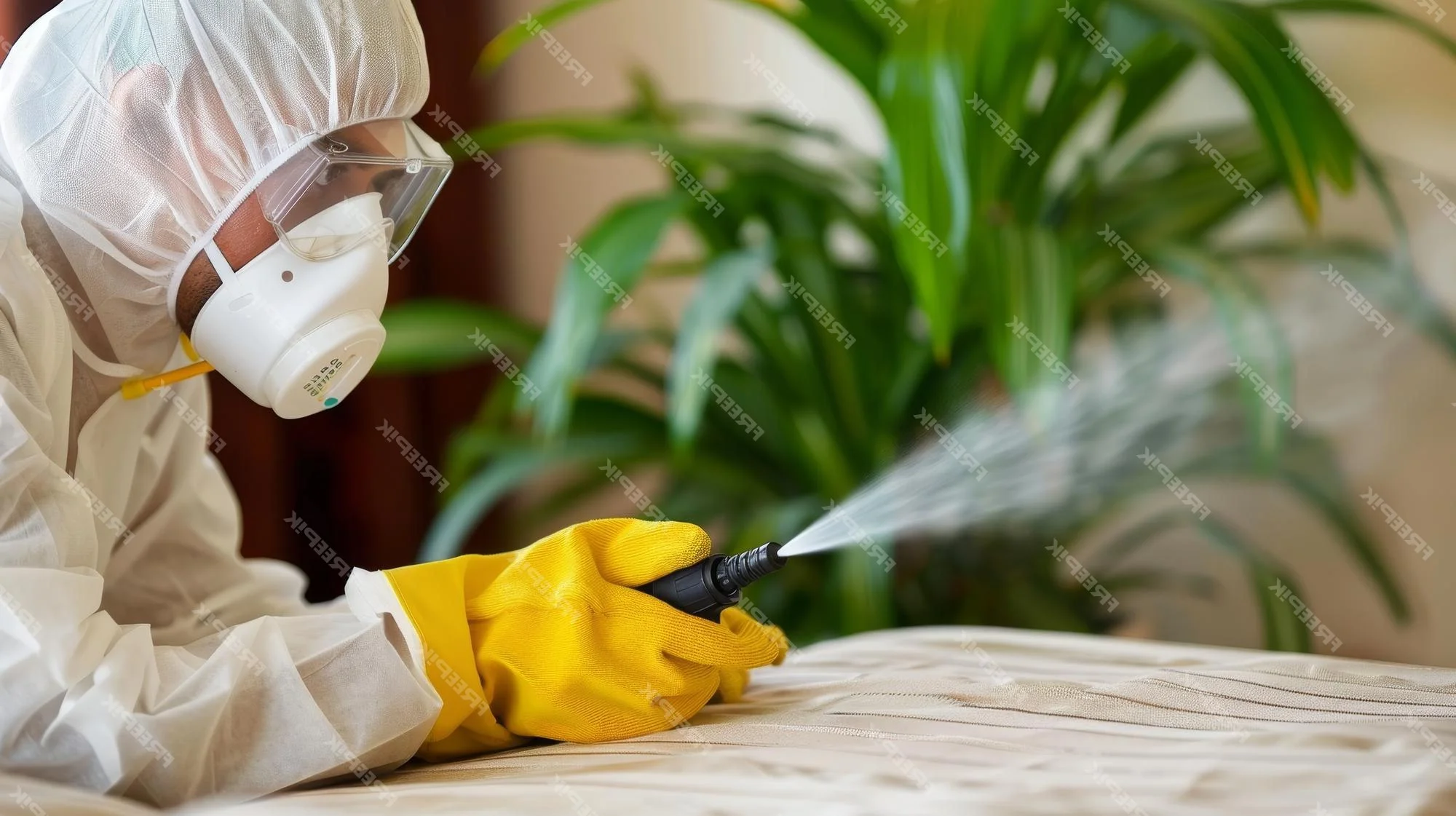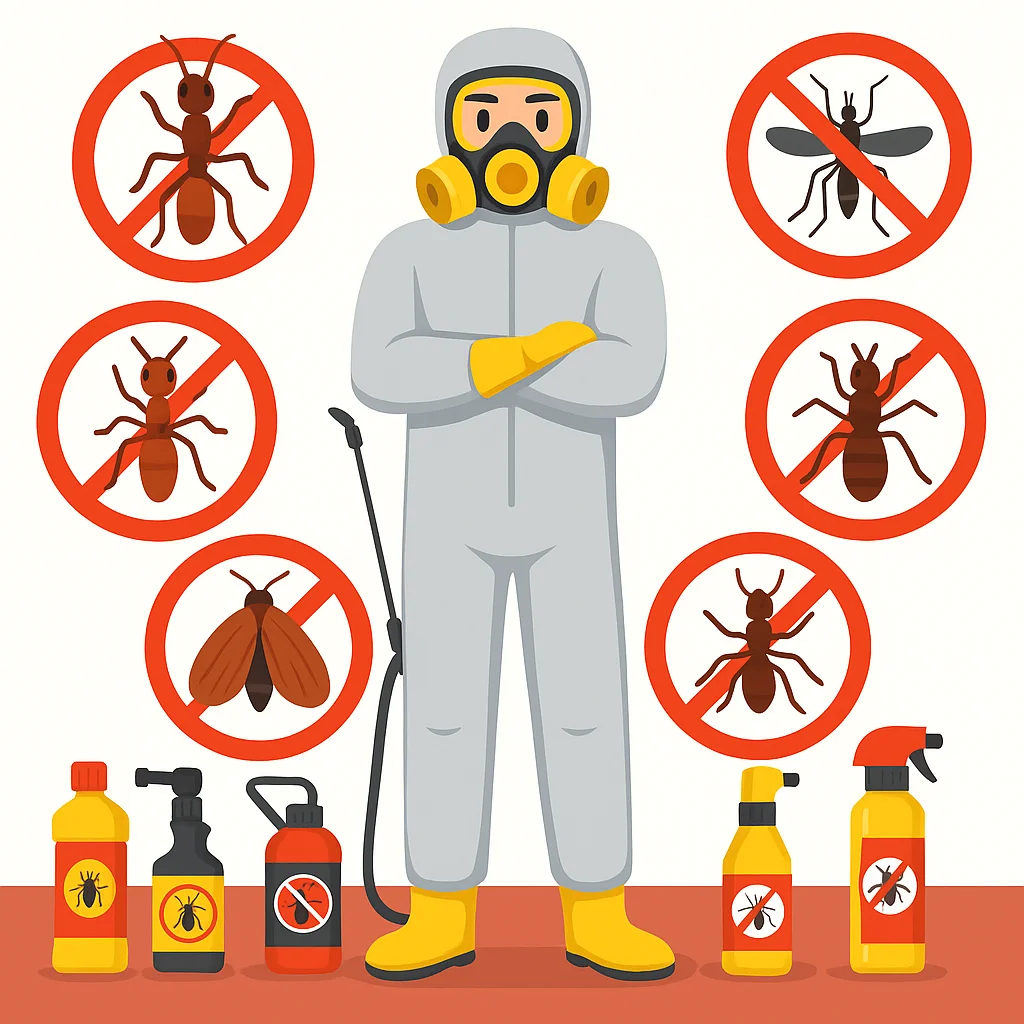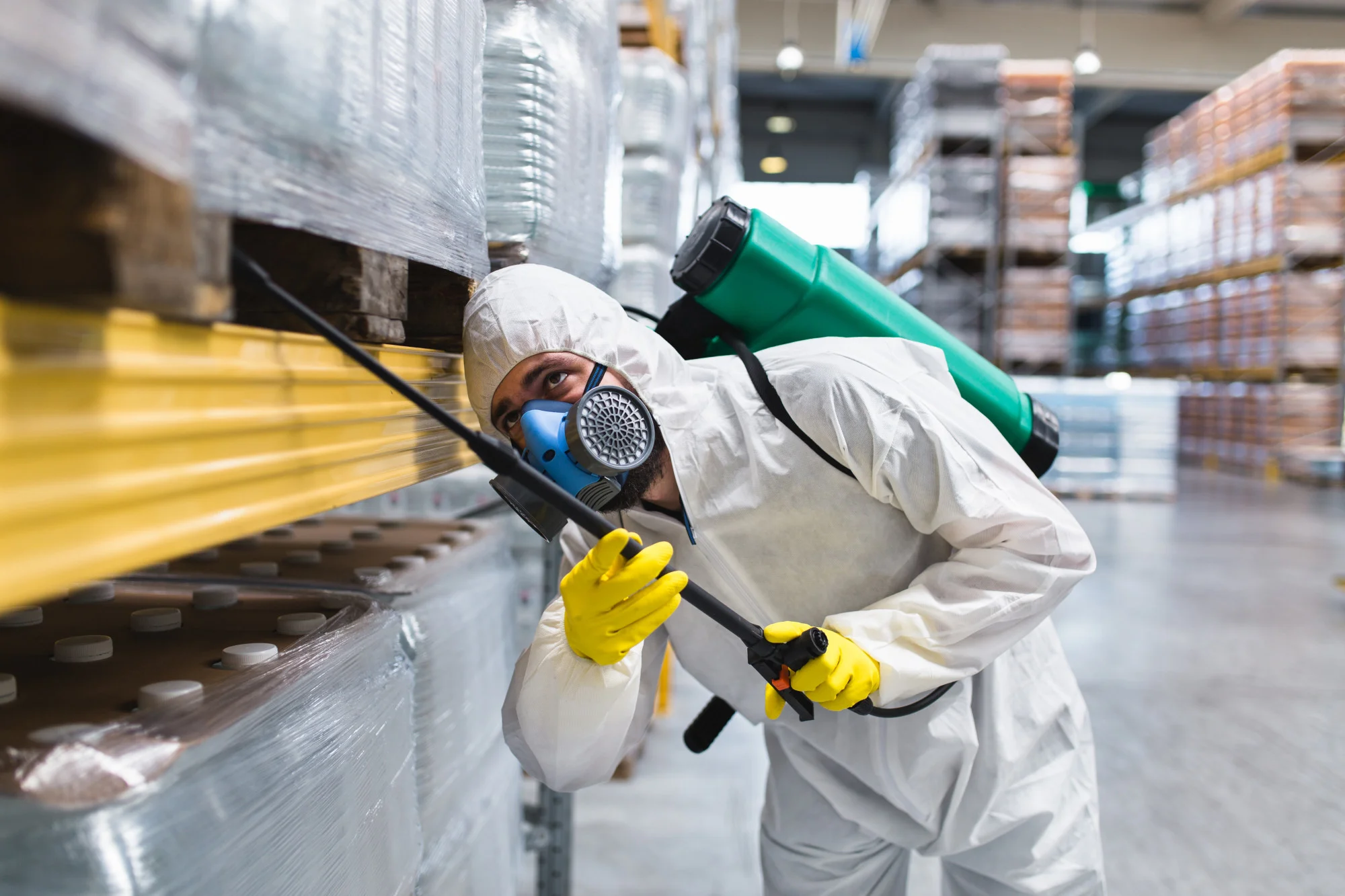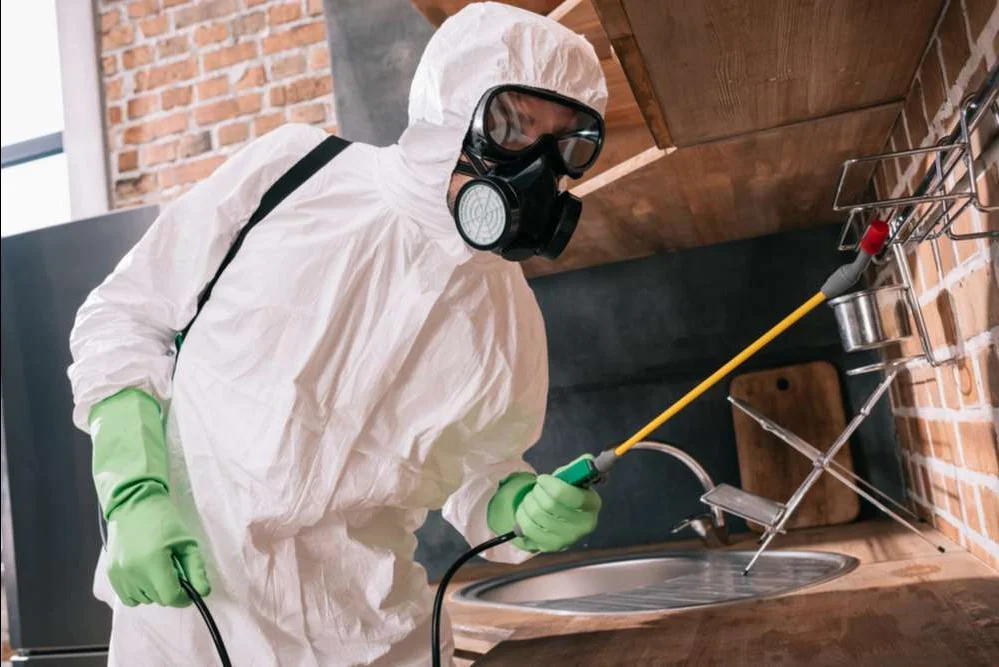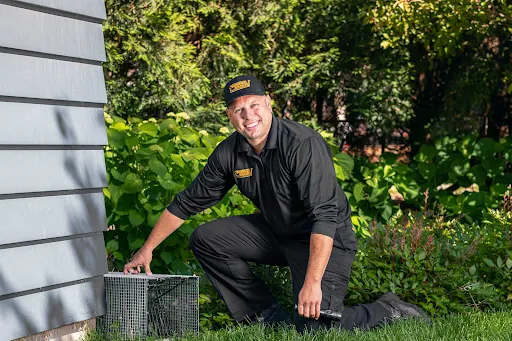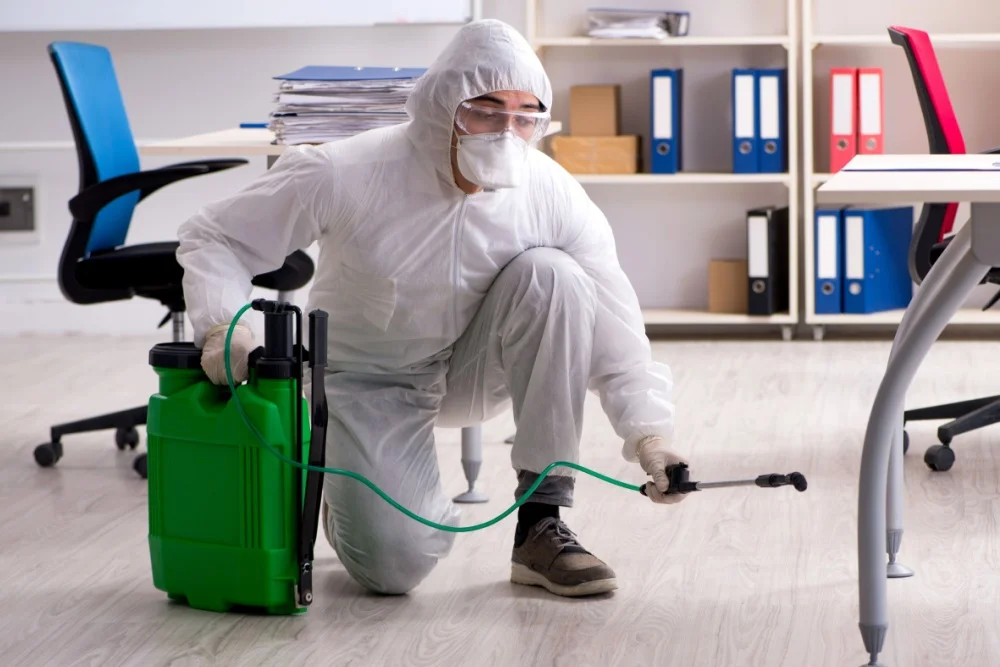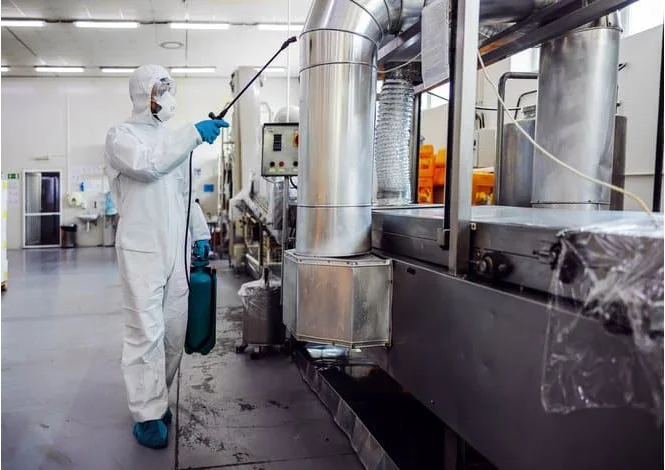Few pests are as universally annoying as flies. From the common house fly buzzing around your kitchen to tiny fruit flies swarming your produce, these winged invaders can quickly turn any space into an uncomfortable environment. Beyond being a nuisance, flies pose serious health risks by carrying bacteria, viruses, and parasites that can contaminate food and surfaces. Effective fly control requires understanding their behavior, breeding patterns, and implementing targeted elimination strategies that address both adult flies and their breeding sources.
Whether you're dealing with a minor fruit fly problem or a major house fly infestation, professional intervention often provides the fastest and most reliable solution. Our experienced technicians use proven methods to eliminate existing fly populations while preventing future infestations. In this comprehensive guide, we'll explore different types of flies, their health risks, and why professional fly extermination services deliver superior results compared to DIY approaches.
Tired of swatting flies all day? Our expert team provides
same-day fly control
Fast Response and guaranteed
fly elimination to restore comfort to your space.
Get immediate help today!
Common Types of Fly Infestations
Not all flies are created equal. Different species have unique behaviors, breeding preferences, and control requirements. Understanding which type of fly you're dealing with is crucial for effective treatment. Here are the most common fly species that invade homes and businesses:
House Flies
House flies are attracted to food sources and can quickly contaminate surfaces
House flies are the most common indoor fly pest, easily recognized by their gray bodies and red compound eyes. These flies are particularly problematic because they feed on decaying organic matter, garbage, and fecal material before landing on your food and surfaces. A single female house fly can lay up to 500 eggs in her lifetime, with eggs hatching into larvae (maggots) within 24 hours under optimal conditions.
House flies don't bite, but they're notorious disease carriers. They can transmit over 100 different pathogens including E. coli, Salmonella, and typhoid fever. Their feeding and reproductive habits make them a serious health concern, especially in kitchens, restaurants, and food preparation areas where contamination risks are highest.
Fruit Flies
Fruit flies multiply rapidly around fermenting fruits and vegetables
Fruit flies are tiny flies (about 1/8 inch long) with tan or brownish bodies and bright red eyes. They're attracted to ripening, fermenting, or rotting fruits and vegetables, as well as sugary substances like spilled juice or wine. These persistent pests can appear seemingly out of nowhere and multiply rapidly, with their entire life cycle completing in just 8-10 days under ideal conditions.
While fruit flies don't pose the same disease transmission risks as house flies, they can still carry bacteria and contaminate food surfaces. Their rapid reproduction rate means a small problem can quickly become a major infestation. Professional fruit fly control focuses on identifying and eliminating breeding sources while using targeted treatments to break the reproductive cycle.
Drain Flies
Also known as moth flies or sewer gnats, drain flies are small, fuzzy-looking flies that emerge from drains, particularly those with organic buildup. They have a distinctive moth-like appearance with hairy wings and bodies. Drain flies breed in the biofilm that forms in sink drains, floor drains, and sewage systems, making them common in bathrooms, basements, and commercial kitchens.
While drain flies don't bite or sting, they can be extremely annoying when present in large numbers. They're weak fliers and often appear to "hop" rather than fly smoothly. Controlling drain flies requires thorough cleaning of breeding sites and may involve professional drain treatment to remove biofilm buildup that supports their reproduction.
Blow Flies
Blow flies are larger than house flies and have a distinctive metallic blue or green coloration. They're attracted to decaying organic matter, particularly dead animals, garbage, and fecal material. These flies are often the first to discover carrion and can appear in large numbers when attracted to suitable breeding sites.
The presence of blow flies often indicates a sanitation issue or the presence of dead animals in walls, attics, or crawl spaces. They're significant disease carriers and can contaminate food preparation areas. Professional treatment involves locating and removing breeding sources along with targeted fly elimination methods.
Health Risks Associated with Fly Infestations
Flies are more than just annoying pests – they're legitimate health hazards that can pose serious risks to you and your family. Their feeding habits and mobility make them highly effective disease vectors, capable of picking up pathogens from contaminated sources and transferring them to clean surfaces, food, and even directly to humans.
The primary concern with fly infestations is foodborne illness transmission. Flies land on garbage, fecal matter, and decaying organic material where they pick up harmful bacteria, viruses, and parasites. When they subsequently land on your food, dishes, or food preparation surfaces, they deposit these pathogens through their feet, saliva, and feces. This contamination pathway has been linked to outbreaks of food poisoning and other serious illnesses.
-
Bacterial Infections Flies can transmit E. coli, Salmonella, Campylobacter, and Shigella, all of which cause severe gastrointestinal illness with symptoms including diarrhea, vomiting, fever, and abdominal cramps.
-
Viral Diseases Some fly species can carry viruses including hepatitis A and polio, though transmission is less common than bacterial contamination.
-
Parasitic Infections Flies can spread parasitic worms and protozoa that cause intestinal infections, particularly in areas with poor sanitation.
-
Respiratory Issues In sensitive individuals, fly allergens and the bacteria they carry can trigger respiratory problems or worsen existing conditions like asthma.
-
Food Contamination Beyond disease transmission, flies can spoil food by laying eggs in it, making it unsafe for consumption even if pathogens aren't present.
Commercial Considerations
For restaurants, food processing facilities, and healthcare settings, fly infestations can result in failed health inspections, temporary closures, and serious liability issues. Professional fly control is essential for maintaining compliance with health regulations.
Professional Fly Control vs. DIY Methods
While hardware stores offer numerous fly control products, there's a significant difference between temporary relief and comprehensive fly elimination. Understanding these differences can save you time, money, and frustration while ensuring your fly problem is truly resolved.
| Approach |
Professional Treatment |
DIY Methods |
| Problem Identification |
Trained technicians identify fly species, breeding sources, and entry points for targeted treatment |
Homeowners often misidentify species and miss breeding sources, leading to ineffective treatment |
| Treatment Effectiveness |
Professional-grade products and proven application methods provide faster, longer-lasting results |
Over-the-counter products offer temporary relief but often fail to eliminate breeding populations |
| Source Elimination |
Comprehensive inspection identifies and addresses all breeding sites and attractants |
DIY approaches typically focus on killing visible flies without addressing root causes |
| Prevention Strategies |
Detailed prevention plan includes exclusion techniques and ongoing monitoring |
Limited prevention knowledge often leads to recurring infestations |
| Time Investment |
Single service visit often resolves problem with follow-up as needed |
Requires multiple trips to store, trial and error with different products, ongoing maintenance |
| Cost Effectiveness |
Higher upfront cost but permanent solution prevents recurring expenses |
Lower initial cost but repeated purchases and time investment add up quickly |
Why DIY Fly Control Often Fails
Many homeowners underestimate the complexity of effective fly control. Fly traps and sprays might kill some adult flies, but they rarely address the breeding sources that continuously produce new flies. Without eliminating these sources, you're essentially fighting a losing battle against an enemy that reproduces faster than you can eliminate them.
Professional exterminators understand fly biology and behavior, enabling them to locate hidden breeding sites like drain biofilm, garbage disposal residue, or dead animals in wall voids. They also use specialized equipment and professional-grade products that aren't available to consumers, ensuring more thorough and lasting results.
Stop wasting time with ineffective DIY solutions! Our professional
fly extermination services guarantee results –
contact us today for a comprehensive treatment plan!
Professional Fly Control Treatment Methods
Effective fly control requires a multi-faceted approach that addresses both adult flies and their breeding sources. Our professional technicians use a combination of proven methods tailored to your specific fly problem and property characteristics.
Inspection and Source Identification
Every successful fly control program begins with a comprehensive inspection. Our trained technicians examine both interior and exterior areas to identify fly species, locate breeding sites, and assess factors contributing to the infestation. This includes checking drains, garbage areas, compost bins, pet waste areas, and potential dead animal locations.
We also evaluate sanitation practices, structural issues that may allow fly entry, and environmental conditions that attract flies. This thorough assessment allows us to develop a targeted treatment plan that addresses your specific situation rather than applying a one-size-fits-all approach.
Breeding Source Elimination
The most critical component of fly control is eliminating breeding sources. This might involve professional drain cleaning to remove biofilm, locating and removing dead animals, improving garbage storage methods, or addressing moisture problems that create ideal breeding conditions. Without source elimination, any treatment targeting adult flies will provide only temporary relief.
Targeted Adult Fly Treatment
Once breeding sources are addressed, we use professional-grade treatments to eliminate existing adult fly populations. This may include targeted sprays, fogging applications, or specialized baiting systems depending on the fly species and infestation severity. Our products are more effective than consumer options while remaining safe for your family and pets when applied correctly.
For commercial properties, we often use discreet treatment methods that won't disrupt business operations while effectively controlling fly populations. Our technicians are trained to work around sensitive areas like food preparation zones while maintaining the highest safety standards.
Exclusion and Prevention
Preventing future fly infestations is just as important as eliminating current problems. We identify and seal entry points, recommend improvements to sanitation practices, and may install specialized devices like air curtains or UV light traps in commercial settings. Our prevention strategies are customized to your property and situation, ensuring long-term fly control success.
Effective Fly Prevention Strategies
While professional treatment is often necessary to eliminate existing fly infestations, implementing proper prevention measures can significantly reduce the likelihood of future problems. These strategies work best when combined with professional treatments and ongoing monitoring.
Successful fly prevention requires understanding what attracts flies to your property and eliminating those conditions. This involves both sanitation improvements and physical barriers that prevent flies from accessing your space or finding suitable breeding sites.
-
Maintain Excellent Sanitation Clean up food spills immediately, store food in sealed containers, and keep garbage in tightly covered bins. Regular cleaning of food preparation areas removes the organic residues that attract flies.
-
Manage Organic Waste Properly Dispose of overripe fruits and vegetables promptly, clean compost bins regularly, and ensure pet waste is removed from yards frequently to eliminate breeding sites.
-
Keep Drains Clean Regular drain cleaning prevents the biofilm buildup that drain flies need for reproduction. Use enzyme cleaners or schedule professional drain maintenance for persistent problems.
-
Seal Entry Points Install or repair window and door screens, seal cracks around windows and doors, and ensure exterior doors close properly to prevent fly entry.
-
Control Moisture Fix leaky pipes, improve ventilation in humid areas, and address drainage problems that create standing water where flies can breed.
-
Landscape Management Keep vegetation trimmed away from buildings, clean up fallen fruit from trees, and ensure proper drainage around your property's foundation.
Professional Maintenance Programs
Many of our clients choose ongoing maintenance programs that include regular inspections, preventive treatments, and immediate response to emerging fly problems. These programs are particularly valuable for restaurants, healthcare facilities, and other businesses where fly control is critical.
Seasonal Fly Control Considerations
Spring (March-May)
- Fly populations begin increasing
- Drain fly problems emerge
- Outdoor breeding sites activate
Focus: Early intervention and breeding site elimination prevent summer population explosions.
Summer (June-August)
- Peak fly activity and reproduction
- Fruit fly problems escalate
- Outdoor dining areas affected
Focus: Intensive sanitation and targeted treatments for maximum fly control during peak season.
Fall (September-November)
- Flies seek indoor shelter
- Last generation before winter
- Fruit fly activity around harvest
Focus: Exclusion measures and elimination of overwintering populations before cold weather.
Winter (December-February)
- Indoor fly problems persist
- Drain flies in heated buildings
- Planning for spring prevention
Focus: Address indoor breeding sources and prepare comprehensive spring prevention strategies.
Commercial Fly Control Solutions
Commercial properties face unique fly control challenges due to higher volume food service, more complex drainage systems, and regulatory compliance requirements. Our commercial fly control programs are designed to meet these specific needs while minimizing disruption to your business operations.
We understand that fly problems in commercial settings can result in failed health inspections, customer complaints, and potential closure orders. Our commercial services include regular monitoring, immediate response capabilities, and detailed documentation to help you maintain compliance with health department regulations.
Industry-Specific Solutions
-
Restaurants and Food Service Specialized treatments for kitchens, dining areas, and food storage zones with emphasis on food safety and customer comfort.
-
Healthcare Facilities Infection control protocols and treatments safe for sensitive medical environments while maintaining strict hygiene standards.
-
Food Processing Plants Comprehensive programs meeting HACCP requirements with documentation and monitoring systems for regulatory compliance.
-
Retail and Grocery Discreet treatments that protect product integrity while maintaining an attractive shopping environment for customers.
-
Office Buildings Professional treatments for break rooms, cafeterias, and waste management areas without disrupting business operations.
What Our Clients Say About Our Fly Control Services
"We had a persistent fruit fly problem that seemed impossible to solve. After trying every store-bought trap and spray, we called the professionals. They identified breeding sources we never would have found and eliminated the problem completely in just two visits."
- Maria R., Homeowner
★★★★★
"Our restaurant was facing a potential health department violation due to fly issues. The emergency response was incredible – they had our fly problem under control within hours and provided ongoing monitoring to prevent future issues."
- David L., Restaurant Owner
★★★★★
"As a food processing facility, we need reliable pest control that meets all regulatory requirements. Their commercial fly program has kept us compliant and fly-free for over two years running."
- Jennifer K., Quality Manager
★★★★★
Frequently Asked Questions About Fly Control
How quickly can professional fly control eliminate an infestation?
The timeline for fly elimination depends on the species, infestation severity, and breeding source accessibility. For most residential fly problems, you'll see significant reduction within 24-48 hours after treatment, with complete elimination typically achieved within 1-2 weeks. Commercial properties or severe infestations may require additional time, but our technicians will provide realistic timelines during the initial inspection.
Are professional fly control treatments safe around food and children?
Yes, our professional treatments are designed to be safe when applied correctly by trained technicians. We use targeted application methods that minimize exposure to food preparation areas and living spaces. Our technicians will provide specific guidelines about any temporary precautions needed, such as covering food items during treatment or waiting periods before re-entering treated areas.
Why do flies keep coming back even after treatment?
Recurring fly problems almost always indicate that breeding sources weren't completely eliminated or that new sources have developed. Professional fly control includes thorough source identification and elimination, which is why it's more effective than DIY methods that only target visible adult flies. If flies return after professional treatment, we provide follow-up services to identify and address any missed breeding sites.
What's the difference between treating different types of flies?
Different fly species require different treatment approaches because they have unique breeding habits and preferences. House flies need garbage and sanitation focus, fruit flies require elimination of fermented organic matter, and drain flies need biofilm removal from drains. Professional technicians identify the species first, then apply species-specific treatment methods for optimal results.
Don't let flies take over your space! Contact our expert team for professional
fly control services that deliver guaranteed results –
schedule your inspection today and enjoy a fly-free environment!
Understanding Fly Behavior and Biology
Successful fly control requires understanding the biology and behavior patterns of different fly species. This knowledge allows our technicians to predict where flies will breed, how they'll behave, and what treatment methods will be most effective.
Fly Life Cycle
Flies undergo complete metamorphosis with four distinct life stages: egg, larva (maggot), pupa, and adult. Understanding this cycle is crucial because different control methods target different stages. Adult flies are mobile and visible but represent only a small portion of the total population. The majority of flies are in immature stages developing in breeding sites.
The speed of this cycle varies by species and environmental conditions. House flies can complete their entire life cycle in as little as 7-10 days under optimal conditions, while fruit flies can reproduce even faster. This rapid reproduction rate explains why fly problems can seem to explode overnight and why eliminating breeding sources is so critical for long-term control.
Environmental Factors Affecting Fly Activity
-
Temperature Flies are cold-blooded insects whose activity and reproduction rates increase with temperature. Most species are most active between 80-90°F, which explains why fly problems peak during summer months.
-
Humidity High humidity levels support fly reproduction and survival. Many species require moist conditions for egg laying and larval development, making damp areas prime breeding sites.
-
Food Sources Different fly species are attracted to different food sources. Understanding these preferences helps technicians predict where infestations will develop and target treatments accordingly.
-
Light Conditions Most flies are attracted to light sources, which can be used strategically in control programs. However, some species like drain flies are more active in low-light conditions.
-
Air Movement Flies are relatively weak fliers and can be significantly affected by air currents. This principle is used in commercial settings with air curtains and strategic ventilation design.
Emergency Fly Control Services
Some fly infestations require immediate attention, particularly in commercial food service environments or when health inspections are imminent. Our emergency fly control services provide rapid response when you can't wait for standard scheduling. We understand that fly problems can escalate quickly and may threaten business operations or special events.
Emergency situations often involve restaurant kitchens, catering events, healthcare facilities, or residential properties preparing for important gatherings. Our emergency response team carries specialized equipment and fast-acting treatments designed to provide immediate relief while implementing comprehensive long-term solutions.
When to Call for Emergency Service
-
Health Department Inspections When you have an upcoming inspection and suddenly discover a fly problem that could result in violations or closure orders.
-
Special Events Weddings, parties, or business events where fly presence would be unacceptable and embarrassing to hosts or damaging to reputations.
-
Sudden Severe Infestations When fly numbers explode overnight, often indicating a major breeding source like a dead animal or sewage backup that requires immediate attention.
-
Food Safety Concerns When flies are contaminating food preparation or service areas, creating immediate health risks that can't wait for regular scheduling.
-
Customer Complaints In commercial settings where customer complaints about flies threaten business reputation and immediate action is needed to prevent further incidents.
24/7 Emergency Response
Our emergency fly control team is available around the clock for urgent situations. We typically respond within 2-4 hours for true emergencies and can provide immediate temporary relief while developing comprehensive treatment plans.
Integrated Pest Management for Fly Control
Our approach to fly control is based on Integrated Pest Management (IPM) principles, which emphasize long-term prevention through a combination of techniques. Rather than relying solely on chemical treatments, IPM combines biological, cultural, physical, and chemical tools in a way that minimizes economic, health, and environmental risks.
This comprehensive approach is particularly effective for fly control because it addresses all factors contributing to infestations. By combining immediate treatment with long-term prevention strategies, IPM programs provide more sustainable results and reduce the need for repeated chemical applications.
IPM Components for Fly Control
-
Monitoring and Identification Regular inspections and fly species identification ensure treatments target the right pests with appropriate methods. This includes tracking fly activity levels and identifying seasonal patterns.
-
Cultural Controls Sanitation improvements, waste management protocols, and facility modifications that eliminate conditions favorable to fly reproduction and survival.
-
Physical Controls Screens, air curtains, UV light traps, and exclusion techniques that prevent fly entry or capture them without chemical treatments.
-
Biological Controls In appropriate settings, beneficial organisms like parasitic wasps or bacterial agents can help control fly populations naturally.
-
Chemical Controls When necessary, targeted application of professional-grade products designed to minimize environmental impact while maximizing effectiveness against target species.
Specialized Fly Control for Different Environments
Healthcare Facilities
Healthcare environments require specialized fly control approaches due to the presence of vulnerable patients, strict infection control protocols, and regulatory requirements. Flies in medical settings pose serious risks by potentially transmitting healthcare-associated infections and contaminating sterile environments.
Our healthcare fly control programs use products and methods that are compatible with infection control protocols while providing effective fly elimination. We work closely with facility management to ensure treatments don't interfere with patient care or violate healthcare regulations.
Food Processing Facilities
Food processing plants face unique challenges with strict regulatory oversight, continuous operations, and zero tolerance for pest contamination. Our programs for these facilities include comprehensive HACCP-compliant monitoring systems, detailed documentation for regulatory compliance, and treatments that meet food safety standards.
We understand the critical nature of food safety and design programs that protect product integrity while maintaining efficient operations. This includes after-hours treatments, sealed treatment areas, and specialized equipment designed for food facility use.
Educational Institutions
Schools and universities present unique fly control challenges with large cafeterias, multiple food service points, and high student traffic. Fly problems in these environments can affect student health, disrupt learning, and create negative impressions for parents and visitors.
Our educational facility programs are designed around school schedules, emphasize child-safe treatment methods, and include staff education components to help maintain fly-free environments between professional services.
Advanced Technology in Modern Fly Control
The pest control industry continues to evolve with new technologies that make fly control more effective, targeted, and environmentally friendly. Our commitment to staying current with these innovations ensures our clients receive the most advanced solutions available.
Smart Monitoring Systems
Modern fly monitoring uses smart traps equipped with sensors that provide real-time data about fly activity levels, species identification, and population trends. This technology allows for more precise treatment timing and helps identify emerging problems before they become severe infestations.
For commercial clients, these systems provide valuable data for regulatory compliance and help demonstrate the effectiveness of pest management programs. The continuous monitoring capability means we can respond quickly to changes in fly activity and adjust treatment strategies accordingly.
Precision Application Technology
Advanced application equipment allows for more precise product placement, reducing chemical usage while improving effectiveness. This includes micro-encapsulated formulations that provide longer-lasting control, targeted spray systems that minimize drift and contamination, and automated dispensing systems for commercial applications.
Biological and Pheromone-Based Controls
Newer biological control methods use naturally occurring organisms or pheromones to disrupt fly reproduction and behavior patterns. These methods are particularly valuable in sensitive environments where chemical use must be minimized while still achieving effective fly control.
Understanding Fly Control Costs and Value
Many people hesitate to call professionals for fly control due to cost concerns, but the value of effective treatment far exceeds the investment when you consider the alternative costs of ongoing infestations. Professional fly control is an investment in health, comfort, and peace of mind that pays dividends through complete elimination rather than temporary relief.
The true cost of fly infestations includes health risks, food contamination, business disruption, and the ongoing expense of ineffective DIY treatments. Professional services eliminate these hidden costs while providing guaranteed results and preventing recurring problems.
Factors Affecting Treatment Costs
-
Property Size and Complexity Larger properties or those with multiple buildings, complex drainage systems, or numerous potential breeding sites require more extensive treatment programs.
-
Infestation Severity Severe infestations with established breeding populations require more intensive treatment than early-stage problems caught quickly.
-
Fly Species Different species require different treatment approaches, with some being more challenging and time-consuming to eliminate than others.
-
Environmental Factors Properties with sanitation challenges, structural issues, or challenging access may require additional work to achieve effective control.
-
Service Frequency One-time treatments cost more per visit than ongoing maintenance programs, which provide better long-term value and prevention.
Investment Protection
Most of our fly control services include follow-up visits and guarantees to ensure complete elimination. This protection means you won't pay repeatedly for the same problem, making professional treatment more cost-effective than it initially appears.
Environmental Responsibility in Fly Control
Environmental stewardship is a core principle in modern pest management. Our fly control programs prioritize methods that minimize environmental impact while maximizing effectiveness against target pests. This includes using products with lower environmental persistence, targeting applications to minimize non-target effects, and emphasizing prevention strategies that reduce the need for chemical treatments.
We believe that effective fly control and environmental responsibility aren't mutually exclusive. By using integrated pest management principles and the latest low-impact technologies, we can eliminate fly problems while protecting beneficial insects, water quality, and ecosystem health.
Green Fly Control Options
-
Botanical Insecticides Plant-derived products that break down quickly in the environment while providing effective fly control in appropriate situations.
-
Physical Exclusion Screens, barriers, and structural modifications that prevent fly entry without chemical use.
-
Biological Controls Beneficial organisms that naturally control fly populations without environmental persistence or non-target effects.
-
Habitat Modification Environmental changes that make areas less suitable for fly reproduction and survival.
-
Precision Application Targeted treatment methods that use minimal product quantities while achieving maximum effectiveness against flies.
Ready to solve your fly problem with professional expertise and guaranteed results?
Our experienced team combines cutting-edge technology with proven methods for
complete fly elimination – contact us now
and take the first step toward a fly-free environment!

